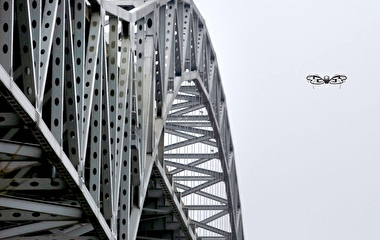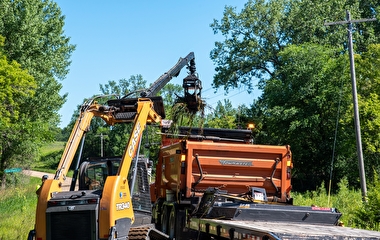Supported by U of M findings, the Minnesota Department of Transportation (MnDOT) has begun piloting a fabrication method for prestressed concrete bridge beams that could reduce end cracking and lower construction costs.
Bridge designers often prestress concrete beams with steel strands to improve the performance of the beams. The strands precompress the beams so that when external loads like vehicle traffic are applied, the concrete is less likely to crack.
Prestressing, however, also causes high stress and cracking at beam ends. One method to reduce this end stress is debonding the strands. “Debonding reduces the prestress force in the beam ends by putting a sleeve around some of the steel strands,” explains Catherine French, CSE Distinguished Professor with the Department of Civil, Environmental and Geo- Engineering.
Debonding hasn’t been permitted in Minnesota because of concerns that chloride from road salt would enter along the debonded strands and reduce durability. MnDOT currently uses an alternative design approach—draping the strands—to relieve end stresses, but fabricators would like to rely less on draping, which they say requires more time, cost, and care to make safely. Local agencies are also interested in debonding because draping requires thicker and more expensive concrete beams.
The research team began by studying current MnDOT prestressing specifications, national prestressing and debonding guidelines, and relevant research. For a number of years, the American Association of State Highway and Transportation Officials has permitted debonding but limited the percentage of debonded strands to 25 percent. “Part of this limitation was based on early research, but the limit may be raised to 45 percent or more given new findings,” French says.
The researchers also surveyed road agencies in 10 states with climates similar to Minnesota’s about their use of debonding, how well debonding reduced beam-end stresses, and their observations regarding potential corrosion issues. They also met with two MnDOT concrete beam fabricators to review prestressing procedures and visited plants to observe their processes and talk with plant personnel.
“We found that many agencies in states with weather conditions similar to Minnesota’s successfully use the debonded strand option,” French says. Typically, the beam ends are sealed with silicone to protect sleeved cables from water and salt intrusion. The states surveyed did not observe any excessive corrosion.
“Our recommendations provide guidance for using debonded strands as an alternative to draping where appropriate,” she says. “The findings also position agencies to adopt current and imminent national debonding standards.” The Minnesota Local Road Research Board sponsored the project.
Based on the findings, MnDOT has begun piloting the debonding option. “The team is recommending we start at debonding 40 percent of prestressed strands,” says Brian Homan, State Aid bridge plans engineer with MnDOT’s Bridge Office. “To begin implementing this recommendation, MnDOT has recently let for construction two pilot projects that are utilizing debonding percentages of 25 and 31 percent.”



